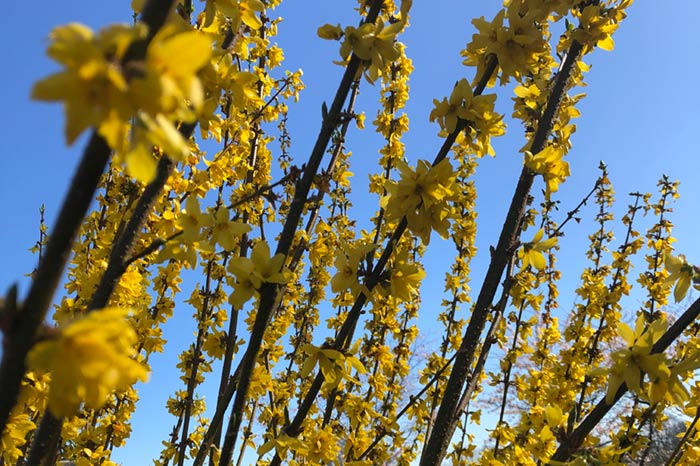Planting plays an important role in managing rainfall, helping us ‘slow it down, spread it out, and soak it in’. By this we mean:
- It helps water to filter into the ground, rather than sit on the surface
- It temporarily stores rainwater in leafy canopies
- It allows some water to evaporate from the plant before it even reaches the ground

What plants should I choose?
It’s always important to choose plants, trees and hedges that suit your soil and levels of sunlight, but there are some general rules you can follow:
According to the Royal Horticultural Society (RHS) plants with large, dense canopies, and rough and hairy leaves allow rainfall to be stored within the foliage. Examples include:
- Yew (Taxus baccata)
- Cotoneaster franchetii
- Western red cedar (Thuja plicata)
Also some plants offer the benefit of reducing rainfall runoff due to their higher rates of evapotranspiration (how water is consumed by a plant). Examples include:
- Forsythia × intermedia
- Hawthorn (Crataegus monogyna)
- Privet (Ligustrum species)
The RHS report ‘Improving the environmental resilience of UK gardens’ offers more detail on this.
What else can I do?
As well as choosing appropriate plants, trees and hedges you can also create sustainable drainage systems that help manage stormwater locally. Examples include:
- Rain gardens – a shallow area of ground which fills with rainwater and then drains.
- Bioswales – similar to a rain garden but directs the rainwater to elsewhere in the garden before it drains away
- Green roofs – to help hold rainwater
Where can I find out more?
Visit the Royal Horticultural Society website for more information on planting and landscaping to reduce the impact of flooding.